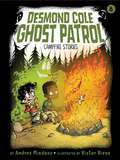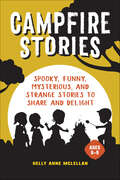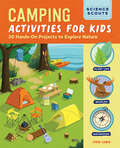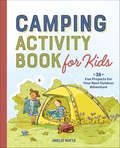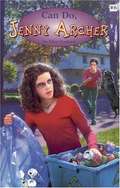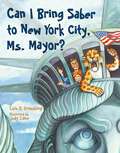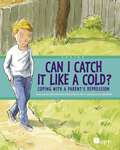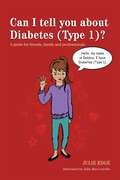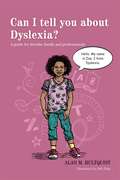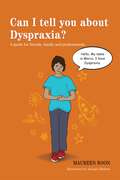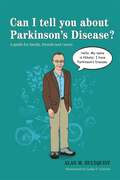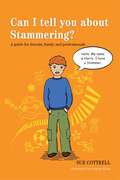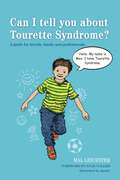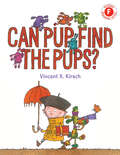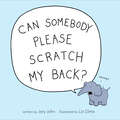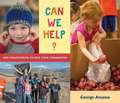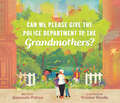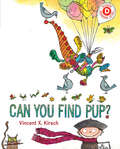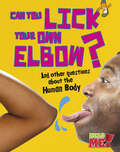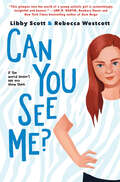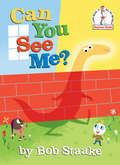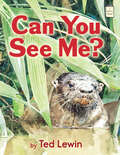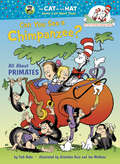- Table View
- List View
Campfire Stories (Desmond Cole Ghost Patrol #8)
by Andres MiedosoDesmond Cole goes camping and tells some scary campfire stories in the eighth book of the Desmond Cole Ghost Patrol series!Camping with Desmond Cole is a lot of fun, until he starts telling ghost stories around the campfire. Most kids tell creepy stories that are totally fake, but Desmond tells totally true stories that will give you goosebumps. So, settle in while Desmond, Andres, and their ghost-friend, Zax, take turns trying to tell the scariest story of all. With easy-to-read language and illustrations on almost every page, the Desmond Cole Ghost Patrol chapter books are perfect for emerging readers.
Campfire Stories: Spooky, Funny, Mysterious, and Strange Stories to Share and Delight
by Kelly Anne McLellanTell exciting tales around the campfire—for kids 6 to 9 Camping with your family can be a blast. You can build campfires together. You can roast marshmallows. And best of all, you can tell stories. This camping book for kids is filled with amazing tales children will love sharing. From a mysterious fog to two heads in a suitcase, these stories are sure to excite and delight!A terrific range of tales—Discover 16 stories divided into four categories: spooky, funny, mysterious, and strange. Whether kids want to scream with laughter or fear, there's something for everyone.The perfect length—These stories are purposely crafted to be quick and engaging, guaranteeing they'll capture every child's attention. Plus, they make for great reading practice!Enhance the experience—Kids can easily augment their trip with awesome storytelling tips, suggestions for games to play, and ideas on how they can help out around the campsite.Ensure your kids have a memorable campout with this excellent collection of campfire stories.
Campground Revenge (Fountas & Pinnell Classroom, Guided Reading)
by Jeffrey Ebbeler Randall BonserNIMAC-sourced textbook. Who Is Trashing the Campsite? Monica is going to find out. Then she's going to make them pay!
Camping Activities for Kids: 20 Hands-On Projects to Explore Nature (Science Scouts)
by Steve LemigGoing on a camping trip? Encourage kids to explore like a scientist with an illustrated camping activity guide for ages 8 to 12.Attention campers! Are you ready to think like a scientist and adventure like an explorer? This fun and interactive guide shows kids how to camp with an active mind for learning. They'll discover all the different items you need to go camping, the steps to building an awesome campsite, and how to make the most of exploring nature through 20 lessons and 20 activities to try on the trails!Explore and play—Help kids get hands-on as they make their own thermometer and solar still, find true north, learn how to safely watch nearby wildlife, and so much more.The 5 Science Scout skills—Kids will practice the key skills that scientists and explorers use to discover the world as they Observe, Ask, Imagine, Test, and Reflect.Start a camping journal—Journal pages and writing prompts will inspire kids to record their ideas and observations as they create a book of amazing camping memories!Introduce curious kids to the science of camping with Camping Activities for Kids—part of the Science Scouts series!
Camping Activity Book for Kids: 35 Fun Projects for Your Next Outdoor Adventure
by Amelia MayerExplore the outdoors and build wilderness skills with activities for kids ages 6 to 9 Get ready for adventure in the great outdoors! There's so much to see and do when you're out camping or hiking— even in your own backyard. Encourage kids to explore the world around them and learn important wilderness skills with this activity book. It's full of projects and ideas to spark a love of nature and help kids have tons of fun outdoors.Kids will learn to tackle survival challenges like building a shelter, making a compass, and tying a bowline knot. They can get creative with fun outdoor projects like designing a treasure hunt, crafting a walking stick, and making a sundial. They'll need an adult's help for some of the activities but can also do many on their own. Sized perfectly for a kid's backpack, this is everything camping books for kids should be.Become an outdoor expert—Master the basics of setting up camp, hitting the trail, identifying plants and animals, observing weather, and surviving the wilderness.Build wilderness skills—Grow skills as the book progresses, earn special badges, learn to care for the planet by leaving no trace, and become an official outdoor adventurer!Learn and play—Colorful illustrations and in-the-book activities like connect-the-dots and fill-in-the-blanks add to the fun for each project.Adventure awaits in the great outdoors with this activity-packed choice among camping books for kids!
Camping on Bear Mountain (Fountas & Pinnell Classroom, Guided Reading)
by Amy Wummer Carolyn ClarkLucas's sister, Izzie, won't stop teasing him about bears on their camping trip. Dad says not to worry. But guess what shows up at their campfire one night?
Can Do, Jenny Archer
by Ellen ConfordIn attempting to win a can-collecting contest, the winner of which will direct a class movie, Jenny risks losing her best friend.
Can I Bring Saber to New York, Ms. Mayor? (Prehistoric Pets #3)
by Lois G. GramblingWill a young boy convince the mayor of New York City to let him bring his friend—a saber-toothed cat—to the Big Apple? An imaginative narrative brings readers to iconic New York landmarks, as Saber shows Ms. Mayor just how helpful a feline friend can be. A humorous follow-up to Can I Bring Woolly to the Library, Ms. Reeder? and Can I Bring My Pterodactyl to School, Ms. Johnson?
Can I Catch It Like a Cold?: Coping With a Parent's Depression (Coping #1)
by Centre For Addiction And Mental HealthIn partnership with the Centre for Addiction and Mental Health (CAMH), Tundra is proud to launch an important series of books for children who have to cope with adult-sized problems. Young Alex’s father had been a policeman until he began to suffer from depression, perhaps the most common mental health issue we face. Alex’s questions are those that are often asked by the children of parents who have depression: is the parent simply lazy? Does he no longer care? And is it something I can catch, like a cold?In simple, straightforward language, the book explains what depression is and how it is treated. It also prepares a child for working with a helping professional. And perhaps most important, it reassures a child that he or she is not alone.Written by Canada’s foremost experts in the field, this is an important book to spur discussion and allay fears of those affected by depression.
Can I tell you about Diabetes (Type 1)?: A guide for friends, family and professionals
by Julia Macconville Julie EdgeMeet Debbie - a young girl with diabetes type 1. Debbie invites readers to learn about this type of diabetes from her perspective, describing how it feels to have high and low blood sugar levels. She explains how she can monitor her blood sugar and controls it with medication. Debbie also talks about the challenges of having diabetes and lets readers know how she can be helped and supported. This illustrated book is ideal for young people aged 7 upwards, as well as parents, friends, teachers and nurses. It is also an excellent starting point for family and classroom discussions.
Can I tell you about Dyslexia?: A guide for friends, family and professionals
by Alan M. Hultquist Bill TulpMeet Zoe - a young girl with dyslexia. Zoe invites readers to learn about dyslexia from her perspective. She helps readers to understand the challenges faced by a child with dyslexia, explaining what dyslexia is and how it affects her at home and at school. Zoe describes exactly why she finds reading, writing and words so difficult, and how other people can help her in these areas. This illustrated book is ideally suited for readers aged 7 and upwards, and will be an excellent way to start a discussion about dyslexia, in the classroom or at home.
Can I tell you about Dyspraxia?: A guide for friends, family and professionals
by Maureen Boon Imogen HallamMeet Marco - a boy with dyspraxia, which is sometimes called Developmental Co-ordination Disorder (DCD). Marco invites readers to learn about dyspraxia from his perspective, helping them to understand what it is and what it feels like when he sometimes struggles to control his movement and co-ordination. He talks about the challenges of having dyspraxia and lets readers know how he can be helped and supported. This illustrated book will be an ideal introduction for young people, aged 7 upwards, as well as parents, friends, teachers and professionals working with children with dyspraxia. It is also an excellent starting point for family and classroom discussions.
Can I tell you about Parkinson's Disease?: A guide for family, friends and carers
by Alan M. Hultquist Lydia CorrowMeet Nikolai - a man with Parkinson's disease. Nikolai invites readers to learn about Parkinson's from his perspective, helping them to understand how Parkinson's affects his daily life and why some tasks can be especially challenging for him. He also gives advice on how to help someone with Parkinson's when they have difficulties with physical movements and memory. This illustrated book is full of useful information and will be an ideal introduction for children from the age of 7, as well as older readers. It will help family, friends and carers better understand and explain the condition, and will be an excellent starting point for group discussions.
Can I tell you about Stammering?: A guide for friends, family and professionals
by Sophie Khan Sue CottrellMeet Harry - a young boy who stammers. Harry invites readers to learn about what it is like to stammer from his perspective and how it affects his daily life and makes him feel. He talks about techniques that can help reduce stammering and describes how friends, family and others can help him to feel at ease and reduce his stammer further. This illustrated book is full of useful information and will be an ideal introduction for young people, aged 7 upwards, as well as parents, friends, teachers and speech therapists working with children who stammer. It is also an excellent starting point for group discussions at home or school.
Can I tell you about Tourette Syndrome?: A guide for friends, family and professionals
by Mal Leicester Apsley Julie CollierMeet Max - a boy with Tourette syndrome (TS). Max invites readers to learn about Tourette's from his perspective, helping them to understand what tics and triggers are and what it feels like to have TS. He explains how living with TS can sometimes be difficult, and how people around him can help him to feel happy and accepted. This illustrated book is ideal for young people aged 7 upwards, as well as parents, friends, teachers and other professionals working with children with TS. It is also an excellent starting point for family and classroom discussions.
Can Pup Find the Pups? (I Like to Read)
by Vincent X KirschPup can&’t find the 5 pups. Can you? This Level F reader is perfect for final term kindergarteners, first term first graders, and summer time fun!Tate looks for new things to draw.Pup looks too.Tate sees new things to draw.Pup sees five pups.The pups are hiding in the museum. There they are--among the dinosaurs, planets and even the butterflies! Children will enjoy practicing their reading skills as they search the pictures for fun details and five mischievous puppies.This book has been tested by the official Fountas and Pinnel leveling system. You will also like Can You Find Pup?, another I Like to Read® book by Vincent X. Kirsch.Level F books, for early first graders, feature longer, more varied sentences than Level E. Level F books encourage kids to decode new multi-syllable words in addition to recognizing sight words. Stories are more complex, and illustrations provide support and additional detail. When Level F is mastered, follow up with Level G.The award-winning I Like to Read® series focuses on guided reading levels A through G, based upon Fountas and Pinnell standards. Acclaimed author-illustrators--including winners of Caldecott, Theodor Seuss Geisel, and Coretta Scott King honors—create original, high-quality illustrations that support comprehension of simple text and are fun for kids to read again and again with their parents, teachers or on their own!
Can Somebody Please Scratch My Back?
by Jory JohnA hilarious take on helping others and self awareness from New York Times bestselling author Jory John and comic artist sensation Liz ClimoPersnickety Elephant has an itch--a big one--and he can't reach it! While he isn't above asking for a little help, no one is up to the task. Turtle is too lazy, Snail is too slimy, and Alligator... well, Elephant isn't sure he wants his assistance. Does Elephant have to do everything himself? Jory John's signature deadpan humor pairs perfectly with Liz Climo's oh-so-innocent-looking animals to create a slyly ironic read-aloud that will leave kids and parents in stitches.
Can We Help?: Kids Volunteering to Help Their Communities
by George AnconaReal kids make a real difference in their communities in this vibrantly photographed chronicle by George Ancona. <P><P>George Ancona celebrates the joy of kids giving back. In one after-school program, middle-school students mentor and tutor younger children. Via a special partnership, schoolchildren help professionals train assistance dogs for people with disabilities. At a community farm, families plant, grow, and harvest produce for soup kitchens and charities. In these and other examples of volunteering, kids of all ages work together knitting hats and scarves for those who could use warm clothes, packing hot meals to deliver to housebound people, and keeping roadways clean. Young humanitarians reading these accounts may well be inspired to find ways that they can help, too.
Can We Please Give the Police Department to the Grandmothers?
by Junauda PetrusBased on the viral poem by Coretta Scott King honoree Junauda Petrus, this picture book debut imagines a radically positive future where police aren&’t in charge of public safety and community well-being. Petrus first published and performed this poem after the shooting of Michael Brown in Ferguson, Missouri in 2014. With every subsequent police shooting, it has taken on new urgency, culminating in the 2020 murder of George Floyd by a Minneapolis police officer, blocks from Junauda's home. In its picture book incarnation, Can We Please Give the Police Department to the Grandmothers? is a joyously radical vision of community-based safety and mutual aid. It is optimistic, provocative, and ultimately centered in fierce love. Debut picture book artist Kristen Uroda has turned Junauda's vision for a city without precincts into a vibrant and flourishing urban landscape filled with wise and loving grandmothers of all sorts.
Can You Find Pup? (I Like to Read)
by Vincent X KirschIn this easy-to-read, search-and-find story, Tate draws cats, bugs, and birds--but he never draws Pup!Tate likes to draw. He draws 10 cats on the couch, 10 bugs in the garden, and 10 birds in the park. Pup, who craves attention, is never in Tate's pictures. Pup is very upset, so he runs away to join the circus. Tate misses Pup and draws many, many pictures of the dog to hang all over town. Tate and Pup reunite, and now Tate will always remember to draw Pup.While reading the story, readers can search for cats, bugs, birds, and Pup.A Junior Library Guild selection!
Can You Lick Your Own Elbow?: And Other Questions About The Human Body (Questions You Never Thought You'd Ask Ser.)
by Paul MasonCan you lick your own elbow? Could you pick up a car? Can you sneeze faster than a cheetah? This book takes a fun look at the human body by asking and answering a series of quirky yet thought-provoking questions such as these! Although primarily a recreational read, the book nevertheless contains a wealth of fascinating information and bizarre facts about the human body that readers will be sure to find captivating.
Can You See Me?
by Rebecca Westcott Libby ScottA coming-of-age story about learning to celebrate yourself -- and teaching the world to recognize you, too -- perfect for fans of R. J. Palacio's Wonder!"This glimpse into the world of a young autistic girl is astonishingly insightful and honest. Tally's struggles to 'fit in' are heart-wrenching, and her victories are glorious." -- Ann M. Martin, Newbery Honor and New York Times bestselling author of Rain ReignThings Tally is dreading about sixth grade:-- Being in classes without her best friends-- New (scratchy) uniforms-- Hiding her autismTally isn't ashamed of being autistic -- even if it complicates life sometimes, it's part of who she is. But this is her first year at Kingswood Academy, and her best friend, Layla, is the only one who knows. And while a lot of other people are uncomfortable around Tally, Layla has never been one of them . . . until now.Something is different about sixth grade, and Tally now feels like she has to act "normal." But as Tally hides her true self, she starts to wonder what "normal" means after all and whether fitting in is really what matters most.Inspired by young coauthor Libby Scott's own experiences with autism, this is an honest and moving middle-school story of friends, family, and finding one's place.
Can You See Me? (Beginner Books(R))
by Bob StaakeA charming Beginner Book about a lovable--but sometimes hard to see—lizard by award-winning illustrator Bob Staake!This bright, cheerful early reader about a giant lizard hiding in unlikely—and un-lizard-like—places combines Staake's trademark high-energy graphic style with the classic appeal of Dr. Seuss, P. D. Eastman, and Robert Lopshire! With simple rhymed text and illustrations that provide visual clues to the meaning of the words on each page, it's exactly what Dr. Seuss had in mind when he launched the Beginner Books series in 1957 with The Cat in the Hat!
Can You See Me? (I Like to Read)
by Ted Lewin"I am a bird. Can you see me?" asks a toucan hidden among the trees. "I am a snake. Can you see me?" challenges a vine snake disguised by its surroundings. In this easy-to-read picture book, Ted Lewin invites readers to explore animal camouflage in the rain forest with a seek-and-find game. Lush watercolor illustrations inspired by Lewin's trips to Costa Rica show how different animals blend into their habitats. The simple text encourages young readers to use their sharp eyes as they try to spot each creature.
Can You See a Chimpanzee?: All About Primates (Cat in the Hat's Learning Library)
by Tish RabeThe Cat learns about primates—from marmoset monkeys to silverback gorillas—in this latest addition to the Cat in the Hat's Learning Library series! Traveling in his open-air Chimpmobile, the Cat takes Nick and Sally to Africa, Asia, and Madagascar, where they meet a barrel full of "monkeys," including mandrills, marmosets, gorillas, gibbons, gallagos, tarsiers, tamarin, pottos, bonobos—you name it! Along the way they learn the basic characteristics of primates (among them hands that can grasp and forward-facing eyes); how to tell the difference between an ape and a monkey (most monkeys have tails; apes don't); and most amazingly—that people are primates, too! Fans of the hit PBS Kids show The Cat in the Hat Knows a Lot About That! (which is based on the Cat in the Hat's Learning Library) will go bananas over this latest addition to the series!
